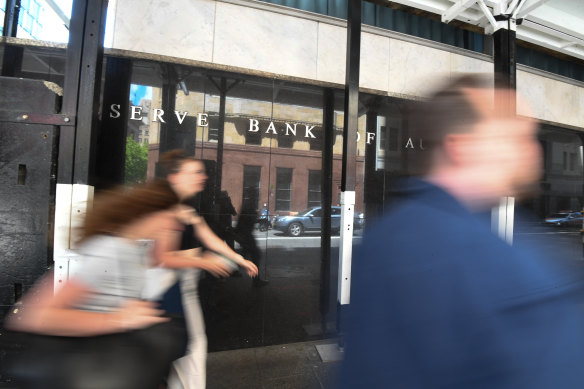Rate cuts tipped for next year as shoppers slash spending like it’s 1991
By Shane Wright
The nation’s big banks believe official interest rates will have to be cut next year to prop up an economy struggling under the weight of the Reserve Bank’s inflation fight, with signs consumers are slashing expenses to make ends meet.
As data shows shoppers cut the total volume of goods they bought over the past year for the first time since the 1990-91 recession, Commonwealth Bank said it believed the RBA could be easing the pressure on home buyers by March.

Inflation is expected to be back within the RBA’s 2-3 per cent target band in the second half of 2025.Credit: Peter Rae
The Reserve Bank this week held the official cash rate at 4.1 per cent, signalling it believes the economy is on its way to a soft landing. It will on Friday provide updated forecasts for growth, inflation and unemployment over the coming two-and-a-half years.
Governor Philip Lowe, who will face his final grilling by the House of Representatives economics committee next week before handing over to his deputy, Michele Bullock, has already revealed that inflation is expected to be back within the RBA’s 2-3 per cent target band in the second half of 2025.
The slowdown in the economy necessary to rein in inflation is what has convinced bank economists the RBA will need to start cutting rates, which have risen over the past 15 months at their fastest pace since the late 1980s.
CBA senior economist Belinda Allen said the RBA could deliver a full percentage point in cuts through 2024.
“We expect the economy to have slowed, inflation to have moved down closer to target and the labour market to be softening to prompt the start of the easing cycle,” she said.
A percentage-point reduction in the cash rate would reduce the monthly repayments on a $600,000 mortgage by more than $400.
Westpac chief economist Bill Evans said while the RBA’s guidance on interest rate movements had been “volatile” over recent months, it now appeared the next move would be a cut – probably in September next year.
He said the economy, based on the RBA’s own forecasts, would be soft and in need of support.
Cuts would come relatively quickly – most likely a quarter of a percentage point every three months.
“It will be sustained well into 2025,” he said.
ANZ economists expect the bank to deliver a single rate cut late next year, while National Australia Bank – which is tipping the Reserve Bank to lift rates once more later this year – has the cash rate at 3.1 per cent in early 2025.
As the RBA’s 12 rate rises from May last year and other cost-of-living pressures hit households, consumers are reducing spending and shopping around for bargains.
Australian Bureau of Statistics figures released on Thursday show the volume of retail goods and services sold in the June quarter fell 0.5 per cent. It was the third successive quarterly drop in volumes, with sales per person down by 3.5 per cent.
The total volume of goods sold across the country fell by 1.4 per cent through 2022-23, the first annual drop since the 1990-91 recession and the largest in records collated since 1983.
Retailers in Queensland (down 3.7 per cent) and Tasmania (down 3.1 per cent) have endured the largest reductions in volumes while the two biggest retail markets – NSW (down 1.5 per cent) and Victoria (down 0.8 per cent) – are also struggling.
ANZ senior economist Adelaide Timbrell said the figures showed inflation was easing in the retail sector, but also confirmed the pressure being felt by the nation’s consumers.
“This is more evidence that Australian households are responding to inflationary pressures and rising interest payments,” she said.
Cut through the noise of federal politics with news, views and expert analysis from Jacqueline Maley. Subscribers can sign up to our weekly Inside Politics newsletter here.